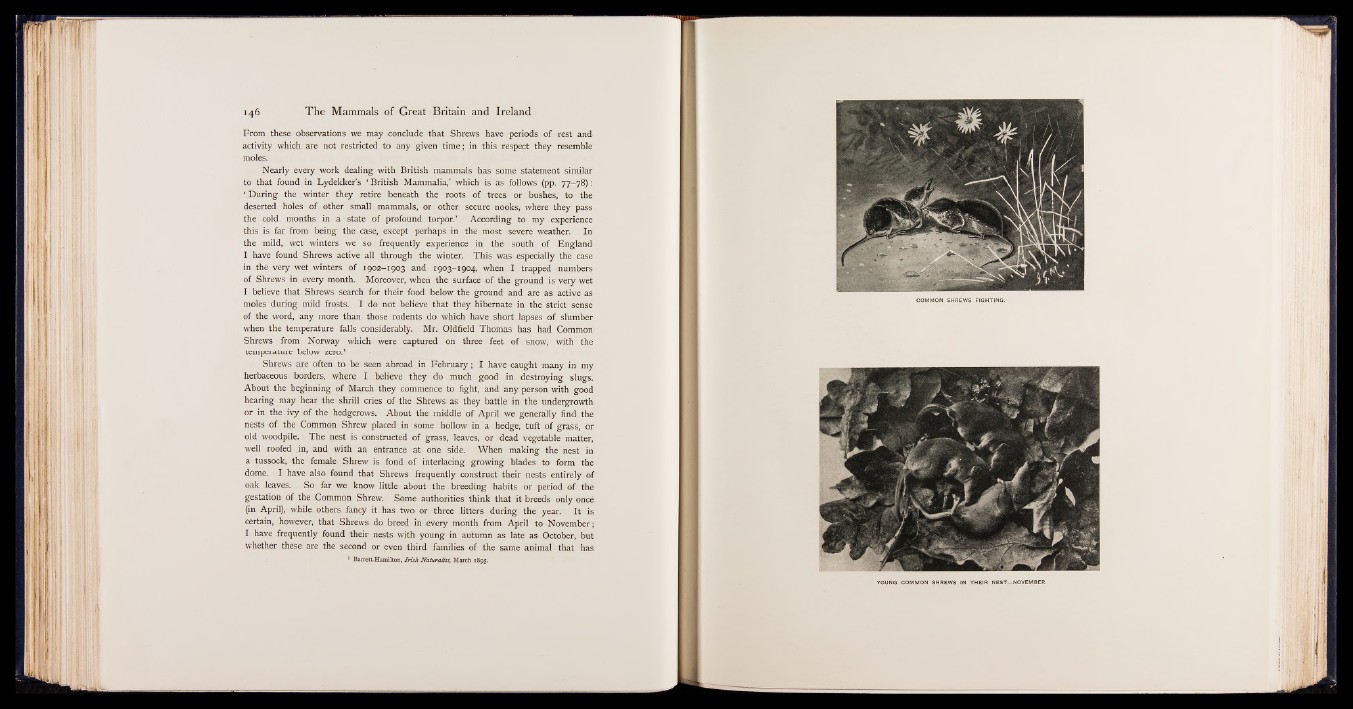
From these observations we . may conclude that Shrews have periods of rest and
activity which are not restricted to any given time; in this respect they resemble
moles.
Nearly every work dealing with British mammals has some statement similar
to that found in Lydekker’s ‘ British Mammalia,’ which is as follows (pp. 77-78):
‘ During the winter they retire beneath the roots of trees or bushes, to the
deserted holes of other small mammals, or other secure nooks, where they pass
the cold months in a state of profound torpor.’ According to my experience
this is far from being the case, except perhaps in the most severe weather. In
the mild, wet winters we so frequently experience in the south of England
I have found Shrews active all through the winter. This was especially the case
in the very wet winters of 1902-1903 and 1903-1904, when I trapped numbers
of Shrews in every month. Moreover, when the surface of the ground is very wet
I believe that Shrews search for their food below the ground and are as active as
moles during mild frosts. I do not believe that they hibernate in the strict sense
of the word, any more than those rodents do which have short lapses of slumber
when the temperature falls considerably. Mr. Oldfield Thomas has had Common
Shrews from Norway which were captured on three feet of snow, with the
temperature below zero.1
Shrews are often to be seen abroad in February; I have caught many in my
herbaceous borders, where I believe they do much good in destroying slugs.
About the beginning of March they commence to fight, and any person with good
hearing may hear the shrill cries of the Shrews as they battle in the undergrowth
or in the ivy of the hedgerows. About the middle of April we generally find the
nests of the Common Shrew placed in some hollow in a hedge, tuft of grass, or
old woodpile. The nest is • constructed of grass, leaves, or dead vegetable matter,
well roofed .in, and with an entrance at one side. When making the nest in
a tussock, the female Shrew is fond of interlacing growing blades to form the
dome. I have also found that Shrews frequently construct their nests entirely of
oak leaves. So far we know little about the breeding habits or period of the
gestation of the Common Shrew. Some authorities think that it breeds only once
(in April), while others fancy it has two or three litters during the year. It is
certain, however, that Shrews do breed in every month from April to November;
I have frequently found their nests with young in autumn as late as October, but
whether these are the second or even third families of the same animal that has
1 Barrett-Hamilton, Irish Naturalist, March 1895.